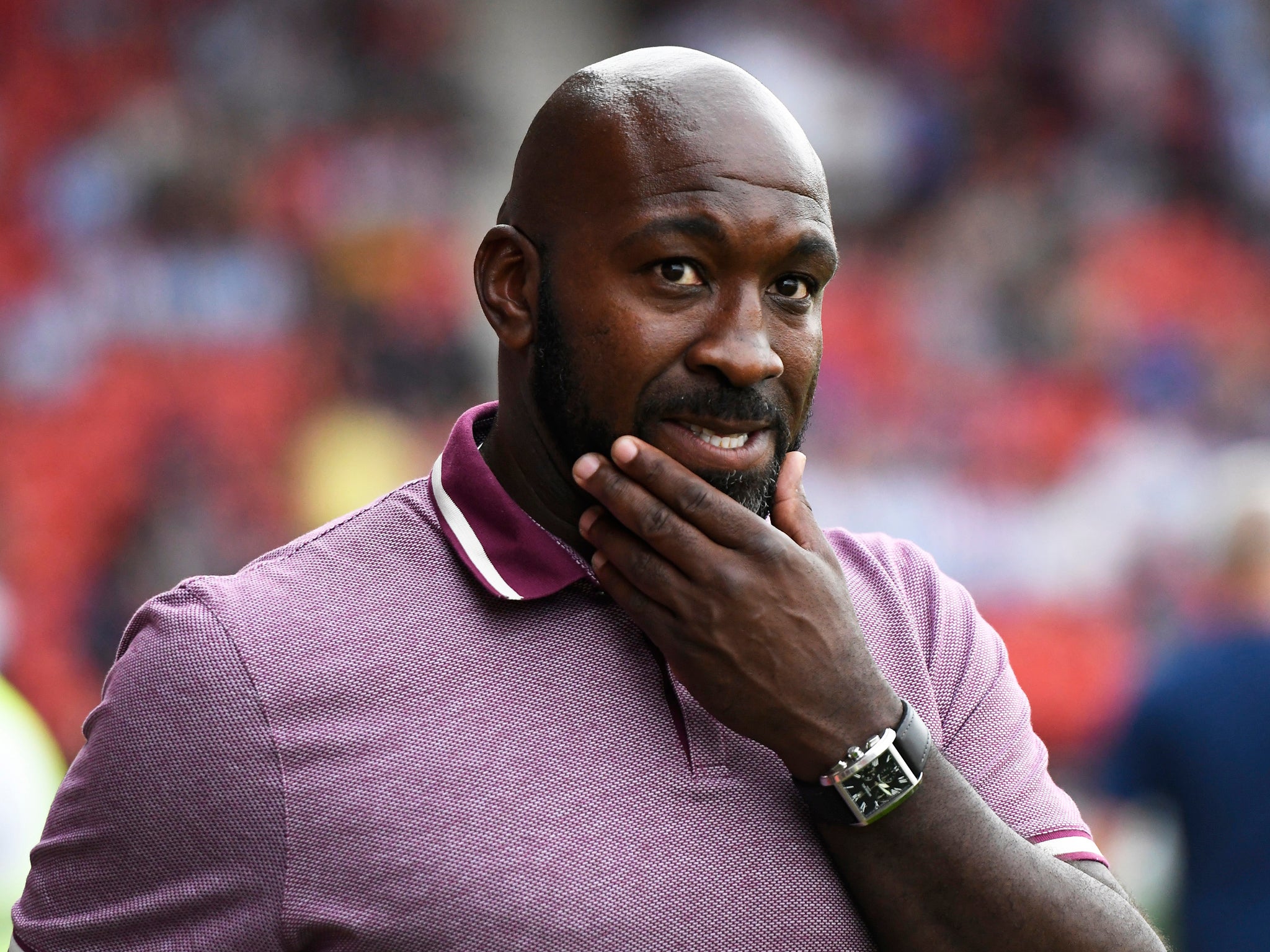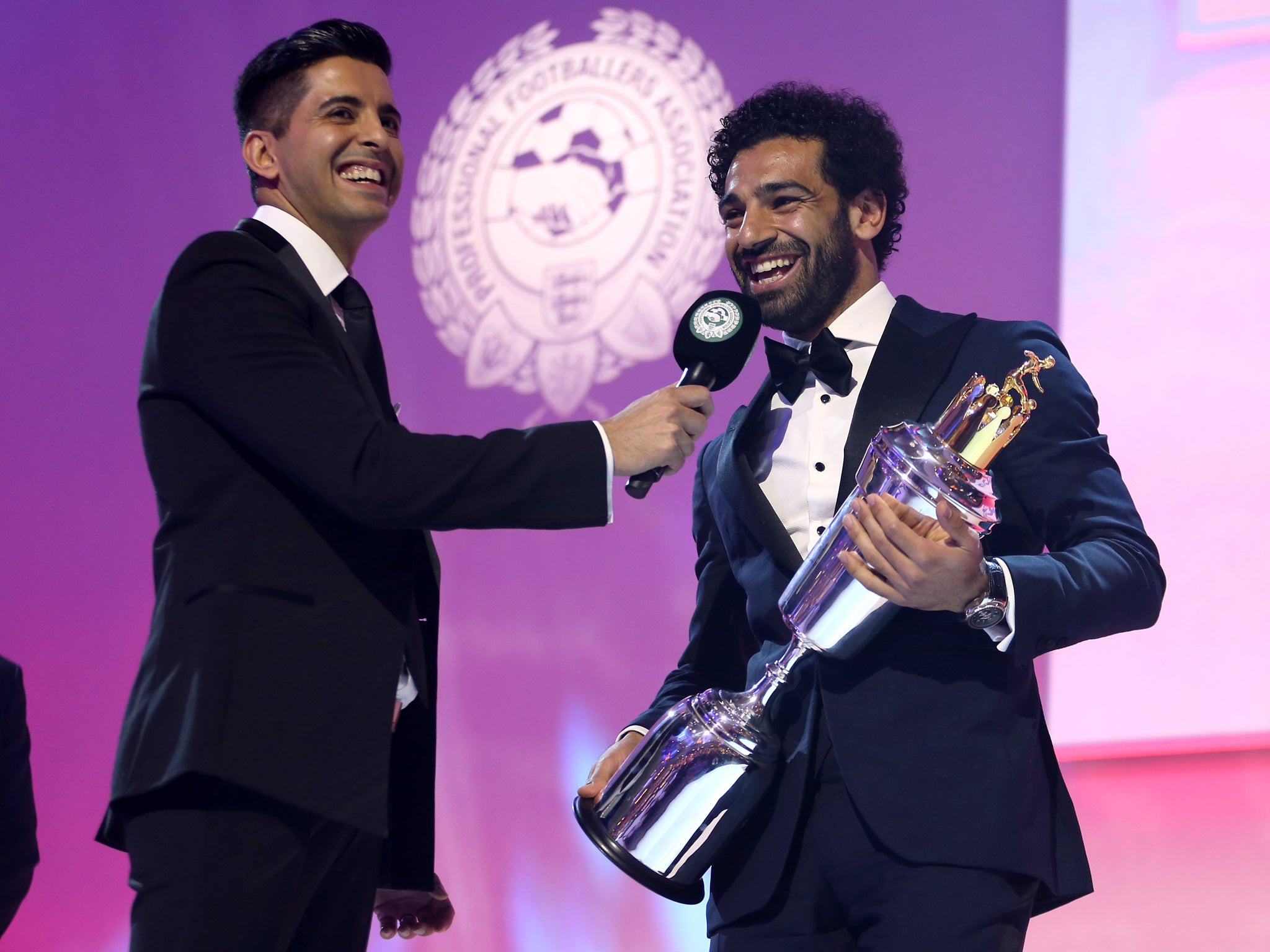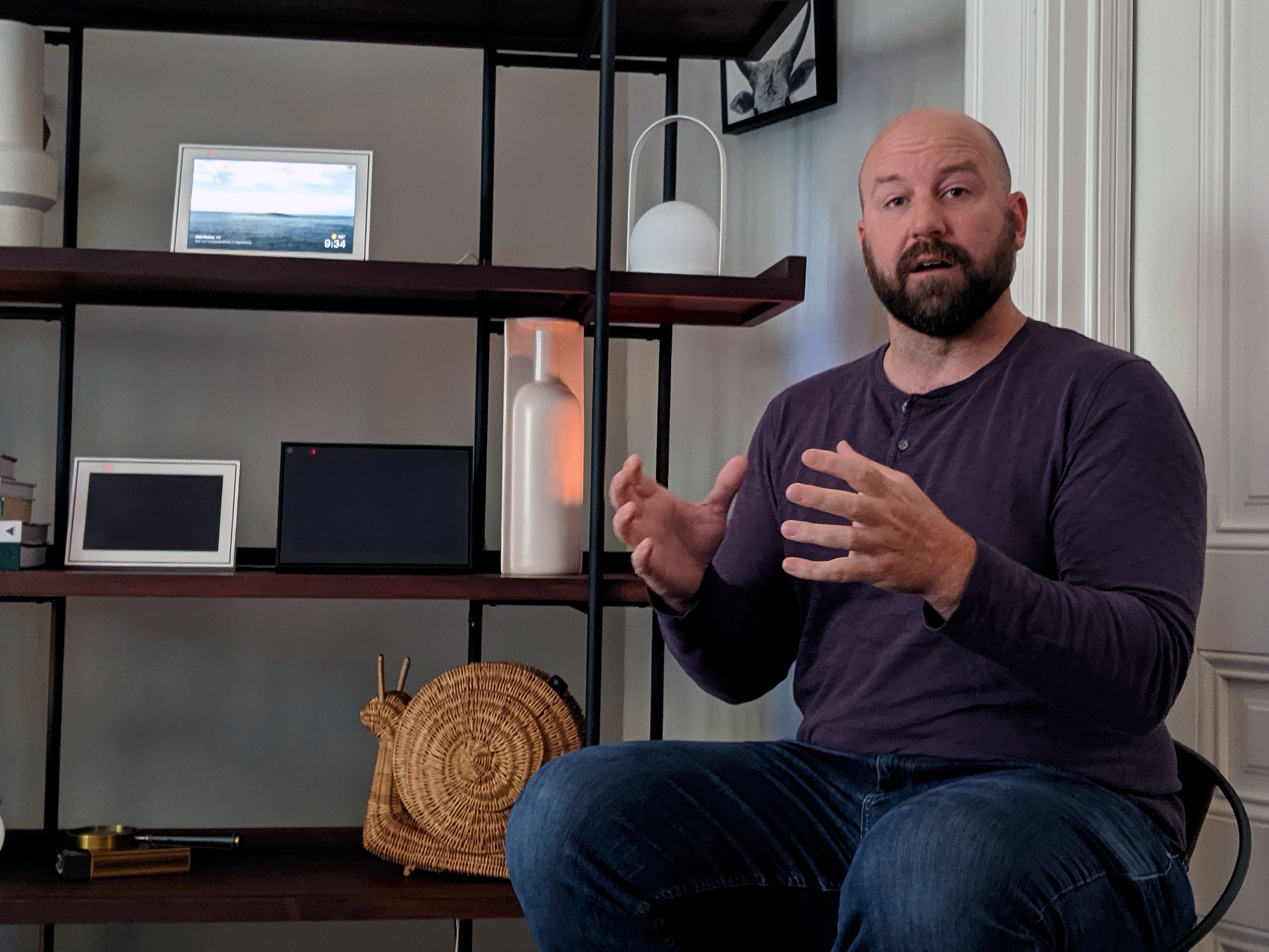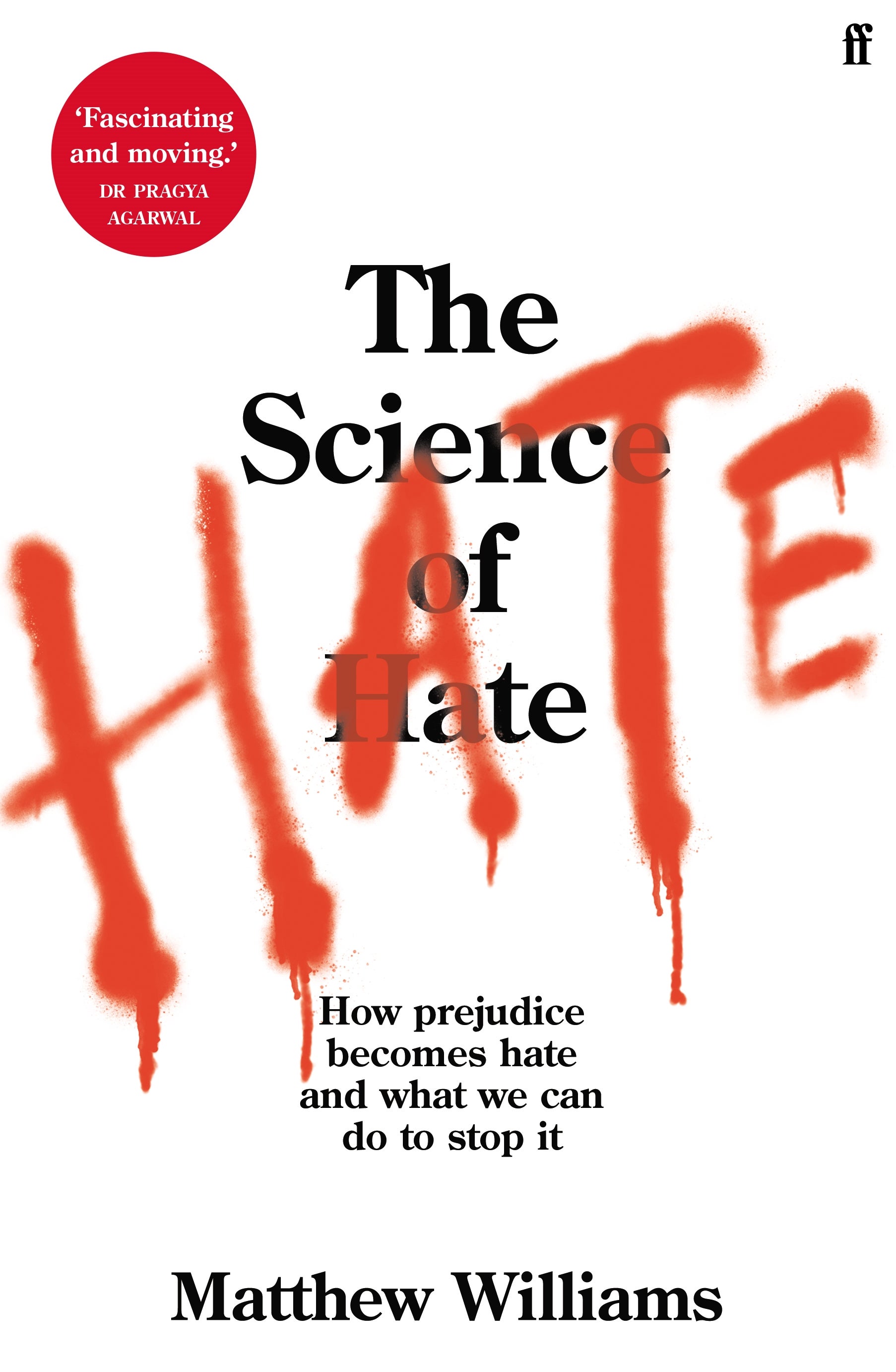Can we solve football’s hate problem? Take a look at the ‘Salah Effect’
When Mo Salah joined Liverpool, Merseyside saw a big fall in the hate-crime rate and a 50 per cent drop in anti-Muslim tweets posted by fans. What can we learn from this, asks Matthew Williams


Following the Liverpool-Manchester United game on 15 October 2011, Luis Suarez was accused of racially abusing Patrice Evra. Despite both player and club maintaining his innocence, Suarez was found guilty by the FA and was punished with an eight-match ban and a £40,000 fine.
Regardless of whether it was an intercultural misunderstanding or racism, Liverpool’s unflinching defence of their star striker, especially after the FA’s decision, risked sending the wrong message to fans. During pre-match civilities at their next meeting in January, Suarez refused to shake the hand of Evra. As the game unfolded, a fan was caught on camera making monkey gestures, and at Evra’s every touch of the ball, a chorus of abuse reverberated around the stands of Anfield.
A month before the game, I had begun an academic project on measuring online racial tensions. The Suarez-Evra incident soon became its focus. While not well documented in the press at the time, my team found Liverpool fans became increasingly hateful and abusive towards Evra on Twitter and last year, Evra revealed that the racism and death threats he received after the incident resulted in him hiring security at his home.
This was my first foray as a criminologist into the murky recesses of the hate-filled backwaters of social media. Almost a decade on and the online hateful abuse targeted at football players from minority backgrounds continues. Since the start of the coronavirus pandemic the grisly problem seems to have accelerated, possibly fuelled by an increased use of social media around games due to the ban on stadium attendance.
Read More:
The stark difference between the events of 2011 and today, is the attention the abuse is getting, and the recognition of its seriousness from players, pundits, politicians and the media. The groundswell of opinion that something has to be done has resulted in clarion calls to politicians and platforms such as Twitter and Facebook to take action.
Some big names in the game have called for a strengthening of laws to boost prosecutions, fines for platforms refusing to remove hateful content, and for a ban on anonymous social media accounts and permanent suspension of repeat offenders.

Hate crime has plagued our communities for far too long, and what we are seeing in football is a reflection of this wider societal ill. To victims and those whose careers are focussed on understanding it, the problem of hate and public calls to find its solution have a long history.
Around a quarter of a century ago I became a victim of a hate crime on the streets of London, and in the same year experienced online homophobic abuse while visiting an American-based chatroom. These experiences were formative, and they created in me a drive to understand the motivation of my attackers and others like them, and why people from minority groups were left unprotected.
At the time of my victimisation there were no specific laws to protect minorities from hate crime, and barely anyone had heard of online hate. It therefore wasn’t possible to report my street-based victimisation to the police as a crime against my identity, and any complaints about my online experience were met with the glib remark, “just unplug the computer”. But change was just around the corner.

In 1998 the Crime and Disorder Act created new offences for racially aggravated crime. Legislation was updated in 2001 to include religious aggravation. Since 2003 further updates to the law have provided extra protections to lesbian, gay, bisexual and transgender people and people with disabilities. Other advances came, including police training in recognising hate crime, and public campaigns encouraging reporting. In just over five years after my attacks, a raft of hate crime legislation had been enacted. The highest power in the land was telling everyone “hate crimes are not going to be tolerated”, and I felt more valued as a citizen and safer for it.
But the changes in law did not materialise as the solution I was hoping for.
I also found the law was toothless when considering abusive and hateful behaviour that falls below the criminal threshold, which includes most of the comments posted online
In 2019-20, 105,000 hate crimes were reported to police in England and Wales (of a total of 184,000 hate crimes, as not all are reported). Around 10 per cent of police recorded hate crimes ended up in front of a magistrate or a judge, and of these just under 78 per cent resulted in harsher sentences for hate offenders. Data limitations accepted, this means roughly only five per cent of all hate crimes resulted in successful prosecution.
I also found the law was toothless when considering abusive and hateful behaviour that falls below the criminal threshold, which includes most of the comments posted online. But simply expanding the law to drag such comments into the net risks infringing on freedom of expression.
The evidence built up since their enactment also shows hate laws rarely act as a deterrent. Those who are on a mission to spread hateful messages, the so-called “life-time incurable haters”, are unlikely to be dissuaded by threat of prosecution. Meanwhile, “defensive haters” and “retaliatory haters” – those who are mobilised for short bursts by invasions of territory or highly emotive events that galvanise and bolster prejudices – are likewise not weighing up the costs and benefits of their actions in the heat of the moment. It is for this same reason that suspending social media accounts or banning user anonymity will have a limited effect.

Hate crime laws bear little consequence for abusers beyond their reach, legally, psychologically or geographically. Victims and researchers of hate have come to the long-considered conclusion that legislation is no silver bullet – it is at best a partial fix. So while football may be the vehicle we need to mobilise a response in those with the power to effect change, the focus should not be on changes to legislation or bans on social media anonymity. Instead they should be seeking deeper solutions, drawing on what works in changing minds.
In the early part of the 20th century, there was disagreement on the outcomes of interracial mixing. Some scholars hypothesised that increased contact between races on equal terms, for example in the classroom, would create unease, tension, even violence, while others argued tolerance and respect would result. Intergroup Contact Theory was developed to address the question.
Since the 1950s, more than 500 studies including more than 250,000 people in 38 countries have been conducted to test the theory. It was found to reduce prejudice across all of the identity categories in recreational, work, education and residential settings, and it even changed the minds of the most prejudiced of individuals.

To grossly oversimplify, positive contact works by challenging prejudices. Prejudices are formed when our attitude and feeling towards someone are shaped by our perceptions of a group we think they belong to.
Most of this processing happens under the bonnet without us realising. Despite our brains being marvellous in their complexity, they are not capable of storing all the information out there in the world. Over millions of years, our brains have evolved to think in terms of crude categories in order to tame the chaos. This has made us cognitive skinflints, taking every available shortcut we can to process information about other groups. When we think of others different from us, these crude categories are recalled, informed by bad experiences and usually incomplete and inaccurate information provided to us by our parents during childhood, and our peers and the media later in life.
Prejudiced fans and minority players rarely if ever come into contact, and the effect of tribalism and biased media that foster division is difficult to nullify
Categories bear stereotypes, characteristics ascribed to a person or whole group of people, based on crude generalisations. Stereotypes come in good and bad forms. A good stereotype might see a positive category associated with an identity, while a bad stereotype a negative category.
A recent study found both stereotypes in action in football commentary. Lighter-skinned players were more likely to be praised for their intelligence and hard work, while their darker-skinned counterparts were more likely to be commended for their raw power and pace, but were also more likely to be criticised for lack of intelligence.
The consequences of these stereotypes can be very real. Lighter-skinned players get the senior positions, and are more likely to enter coaching careers, compared to darker skinned players, despite their records on the field being equal. In June 2020 there were only six black or minority ethnic head coaches in the top clubs in the English professional leagues.
When stereotypes that relate to minority identities, such as race or sexual orientation, are left unchallenged they can lead to systemic discrimination and prejudice. Positive contact works against our category-making machinery by updating old incorrect second-hand information with new accurate information from the source.

To see the full effect of positive contact migrate from psychology labs into wider society, there are optimal conditions that must be met: people from different cultures must be geographically integrated, be supported by an authority figure that both groups respect, and should work cooperatively towards common goals.
To date, multiculturalism has not been as successful as it could have been, indicating positive contact has had some teething problems. There are forces that have undermined the optimal conditions, in particular politicians and the media that have something to gain from division. The spreading of anti-immigration narratives, which manufacture differences between groups, slow down and even stall successful integration. But minimise these forces, and foster the right conditions, and harmonious societies result.
The translation of positive contact into the football context may seem even more fraught with difficulty. Prejudiced fans and minority players rarely come into contact, and the effect of tribalism and biased media that foster division is difficult to nullify. But if we were to try, maybe the easier first step is to understand the effect of positive contact on those working towards the same goal – between minority players and prejudiced fans of the same club.

Mohamed Salah joined Liverpool Football Club in July 2017 in a club record €42 million transfer. He is one of around 50 Muslims among the Premier League’s 500-odd players. He scored 36 times in his debut season, becoming Europe’s leading goal scorer that year. Shortly after his transfer he was awarded Player of the Month by fans for his outstanding performance, and eventually won the Players’ Player of the Year and Premier League Golden Boot in 2018.
On the pitch, Salah celebrates goals by performing the sujud (prostration to Allah) and he has further raised awareness of Islam by posting pictures of Islamic practices (eg Ramadan observance) to his more than 11 million followers on social media, and refusing to celebrate goals following attacks on mosques. In appreciation of his success, fans have taken to victory chants that incorporate positive sentiment towards Islam:
If he scores another few, then I’ll be Muslim, too; If he’s good enough for you, he’s good enough for me; Sitting in a mosque, that’s where I wanna be!
Salah joined Liverpool only months after the string of Islamic extremist terror attacks in 2017, which saw the highest rise in anti-Muslim hate crime ever recorded by police in England and Wales. At this time, Liverpool, being less ethnically diverse than the UK as a whole, ranked in the top five police force areas for hate crime.
Within months of his signing, evidence was mounting that this “Salah effect” was spilling on to the streets of Liverpool. A study showed that Merseyside had a remarkable 16 per cent lower hate crime rate following Salah’s signing compared to the expected rate had he not joined Liverpool FC. The Salah effect also spread online, with a 50 per cent drop in anti-Muslim tweets posted by Liverpool fans. Meanwhile, the rates of hate crimes and tweets in other areas and other fan bases either remained stable or increased after his signing, indicating that the effect on tolerance towards Muslims was localised.

Contact works best if it is direct, meaning individuals need to come together under optimal conditions. This may seem like an impossible ask for fans and Premier League players. But the Salah effect demonstrates indirect contact can also reduce prejudice. Salah ticked many of the boxes: Liverpool fans shared the common goal of winning trophies; Salah was endorsed by the club’s management and coaches, representing the fans’ trusted authority figures; and he had been successful on delivering his promises, creating a positive experience for all.
A player’s racial and religious group is nested within the wider group of the club for which they play. In the psychology of racially prejudiced fans, the super-ordinate group, the club, can trump the sub-ordinate group, the race and religion of the player. Prejudiced Liverpool fans can overlook and even embrace Salah’s race and religion because he is on the same side as them. In psychology this is called cross-categorisation. Mo Salah simultaneously belongs to the category “Muslim” as well as the category “my club” – “we may be from different groups, but we are on the same team”.
Beyond improved cooperation in police investigations, the touted social media solutions, including a ban on anonymity, are likely unworkable
The success of the Salah effect should not be understated. Racist fans abusing their own players, usually when they under-perform, is an insidious problem. But the prejudice reducing process underpinning positive indirect contact has its limits. Promoting it between players and prejudiced fans from opposing teams is a clear challenge.
If Mo Salah were to transfer to another team, the cross-categorisation flips from “my club” to “their club”, and the benefits of belonging to the super-ordinate group are lost. It is unclear if the diffusion of benefits of the Salah effect that saw lower anti-Muslim hate crime and speech rates extended to Muslim players of competing clubs. For some fans, the floodgates that were holding back their prejudices may be thrown wide open in the event of a transfer, and the hateful social media posts may flow unabated once again.
The manifestation of football’s racism problem on social media is a further demonstration of the difficulty in fostering positive contact. Andrew “Boz” Bosworth, VP of Facebook, became notorious for expressing the company’s relentless drive to connect people. Following a Facebook Live stream of the shooting of Chicago resident, Antonio Perkins, Bosworth wrote in an internal memo titled The Ugly: “We connect people. Period... That can be bad if they make it negative. Maybe it costs someone a life by exposing someone to bullies... Maybe someone dies in a terrorist attack coordinated on our tools, and still we connect people. The ugly truth is that we believe in connecting people so deeply that anything that allows us to connect people more often is *de facto* good.”

This “ends justifies the means” drive was not endorsed by Zuckerberg at the time. But the vision of Bosworth is closer to the reality than that of his boss’s. Not all contact breaks down stereotypes and intolerances. Contact under the wrong conditions, such as competition and threat, can result in negative stereotypes on steroids.
Nefarious characters who have something to gain from discord promote these conditions. And because hate is “sticky”, keeping users online for longer, which drives up profits, platforms are slow to combat the bad characters. Negative contact abounds online, ploughing ground fertile for intolerance and hate. The storming of the US Capitol Building and the genocide in Myanmar are just a few of the more harrowing outcomes.
Beyond improved cooperation in police investigations, the touted social media solutions, including a ban on anonymity, are likely unworkable. Positive contact, fostered under the right conditions in the absence of nefarious actors, does generate harmonious societies. The Salah effect gives us a glimmer of hope that minority players can break down negative stereotypes and even have an impact beyond the grounds. Whether such indirect positive contact could prevent Liverpool fans abusing another Evra on Twitter in the future remains an unknown.
Read More:
Even if positive contact is shown to have more mileage in reducing abuse in football, we can’t rely solely on star minority players to do the hard work. As with most seemingly intractable problems, their solutions must have many contributing parts. Together with the law, platforms and players, the fans too must take a stand against abuse.
Platforms repeatedly demonstrate that we cannot continue to allow them to mark their own homework. Instead of relying on the tech giants for solutions, we should turn our attention to the true great successes of the internet, digital commons. Online common spaces, like Wikis, depend on millions of contributors to actively take part in governing online interactions.

Football fans who engage online have the ability to coordinate in a similar way. In the face of hate and abuse, counter-speech that reinforces community standards can change online behaviour, and maybe the minds of those behind the screens. Those that care the most about the game need to become hate incident first responders, setting and enforcing the standards of acceptable behaviour, both online and in stadiums.
As in wider society, the problem may seem insurmountable but to give us hope that hate is not inevitable in the game we need look no further than the stands of Anfield, around which praise for Islam has echoed.
‘The Science of Hate: How prejudice becomes hate and what we can do to stop it’ is published by Faber & Faber on 25 March 2021 (£14.99 paperback). Order here: https://www.amazon.co.uk/Science-Hate-prejudice-becomes-hate/dp/0571357067/
Join our commenting forum
Join thought-provoking conversations, follow other Independent readers and see their replies
Comments
Bookmark popover
Removed from bookmarks